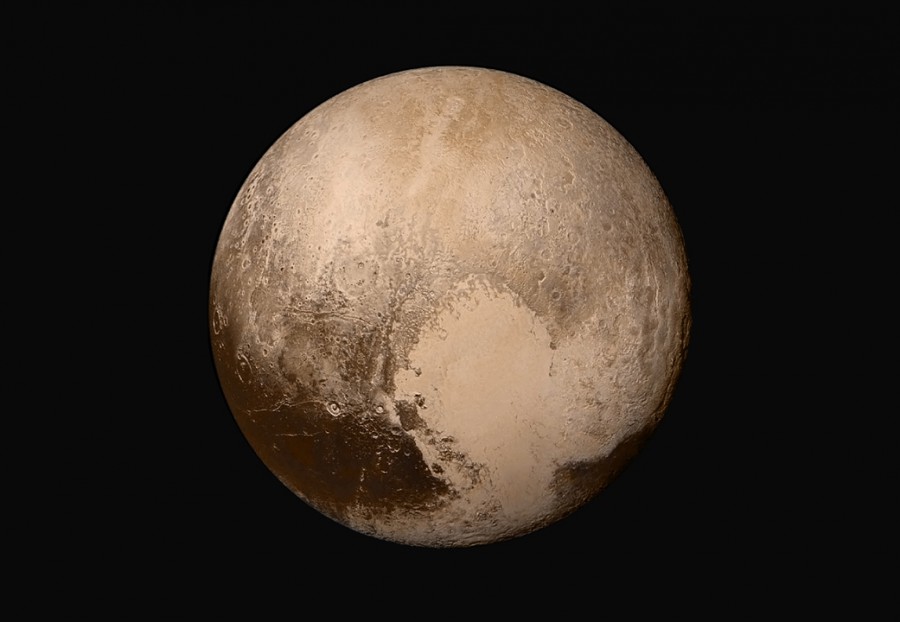Ever since NASA’s New Horizons probe flew past distant dwarf planet Pluto in July 2015, scientists have been poring over new, exciting data. Among the most useful data are the photographs. These images are far and away better than anything even the powerful Hubble Space telescope could manage. And by looking at them, scientists can make a number of hypotheses (educated guesses) about what happened in Pluto’s past.
One of these is that Pluto and nearby moon, Charon (say kair-on), once had active underground oceans that sloshed around beneath their rocky surfaces. Pluto is extremely far from the Sun, making its part of the solar system exceptionally cold. So what was keeping these “oceans” flowing? Scientists believe that these oceans were rich in ammonia, a compound that is an incredible anti-freeze (it can stay a liquid at nearly -100˚C).
Eventually though, Pluto and Charon cooled down to the point where these oceans froze. In Charon’s case, the planet became so cold that the frozen oceans expanded violently (think about how water expands as it cools into ice cubes in your freezer). Because this new ice was locked under Charon’s surface it had to break and warp the surface of the entire moon! You can see that the moon is not as round as most moons.
As for Pluto, scientists think that radioactive energy from its centre is keeping the dwarf planet a little warmer, saving it from the same broken future as Charon. It’s also keeping it looking quite young. Unlike Charon, Pluto has far less craters and whole areas with a smooth surface.
What’s its secret? The same internal heat means that parts of Pluto’s surface are still what scientists call “geologically active”. This means that glaciers and plains on its surface are still in motion (these are the kinds of forces that cause earthquakes on Earth). This means that craters, which on a moon like Charon or our own Moon can remain for billions of years, disappear from a constantly shifting surface. There may even be winds that also gradually smooth out the surface.
Why is this that significant? Before New Horizons arrived at its destination, many scientists guessed that Pluto would be rocky, full of craters, and without any atmosphere (which means no winds). Guess Pluto is further proof that no matter what you’ve heard, you never really know what a place is like until you pay it a visit.











cool, i guess.
Woooooow 😎 🙂
hmmmmmmmmmmmmmmmmm………………….one day we’re going to live there.
😀 😀 😀 😀 😀 😀 😀 😀 😀 😀 😀 😀 😀 😀 😀 😀 😀 😀